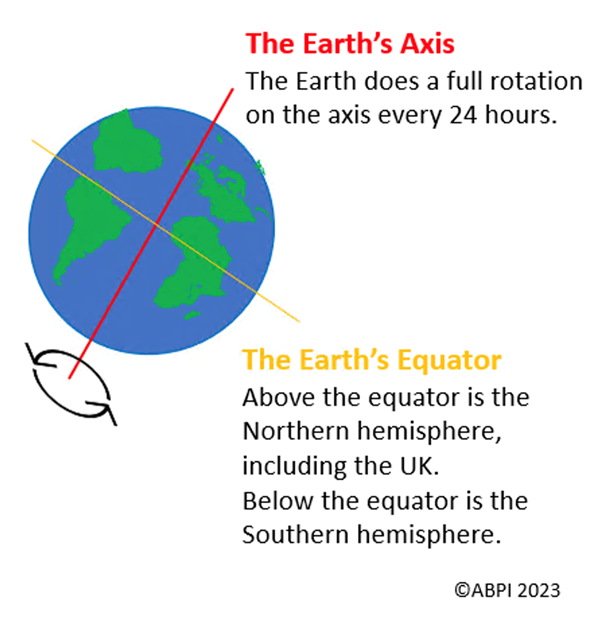This topic takes on average 30 minutes to read.
There are a number of interactive features in this resource:
 Chemistry
Chemistry
 Physics
Physics
 Science
Science
The Earth orbits about the Sun, the Moon orbits around the Earth and the Earth is on a tilted axis, which is why we have seasons, days, months and years.
It takes one year for the Earth to orbit around the Sun and one month for the Moon to orbit about the Earth.
Every 24 hours (every day) the Earth rotates on its axis fully. This is why we have day and night; when the part of the Earth that you are in is facing the Sun, this is day. When the part of the Earth that you are in is not facing the Sun, this is night.


As you can see in the diagram above, the Earth also has hemispheres, depending on the position to the equator. Any countries above the equator are in the Northern hemisphere, and any countries below the equator are in the Southern Hemisphere.
Hemispheres are important when discussing seasons, as they are tilted away or towards the Sun at different times in the Earth’s orbit. This is why different seasons have different day lengths, with the summer being lighter earlier and getting darker later and the winter being lighter later and getting darker earlier.
Due to global warming and climate change, we are experiencing a shift in the seasons. This is because the increased amount of greenhouse gases in the atmosphere is changing the climate and therefore, alters seasons.
However, this is a shift in the climate of the seasons, as opposed to the seasons themselves. The astronomical process behind seasons remains the same, and so day length remains the same.
One example of this is the ‘false spring’, whereby spring climate conditions are experienced in late winter before the astronomical spring has begun (and so the climate feels like spring, but the days are still as short as they are in winter). This can affect animals and plants, whose breeding patterns and hibernation can be altered as a result.
For example, spring is the season in which birds usually have their chicks, and these chicks eat caterpillars. However, spring getting earlier means that the caterpillars are around earlier than when the chicks are born. The caterpillars have adapted to the earlier spring but the birds haven’t. Here, the earlier spring is the selection pressure. This can put the chicks in danger as they don’t have any food to eat.